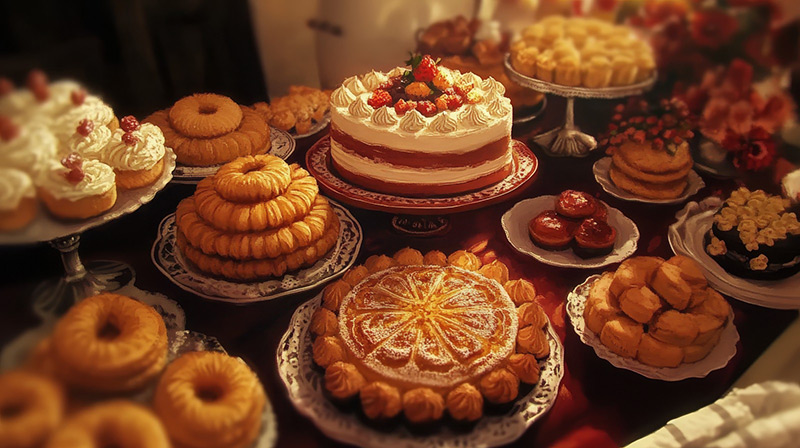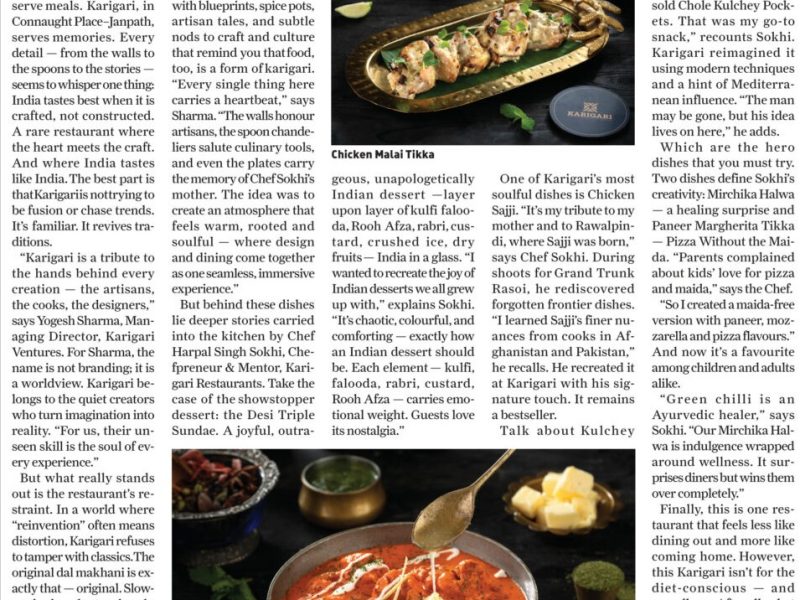Your love affair with the precious stones doesn’t end with the purchase. You’ve really got to take care of the ice to keep the blemishes away. Here are tips on how to buy diamonds.
A smart alchemist once said a diamond is a mere lump of coal that did exceedingly well “under pressure”. This piece of carbon has been a rare find and therefore worth much more than its country cousins – graphite and coal. Diamonds today have become the most coveted piece of jewellery, often surpassing gold in people’s perception and for its snob appeal. No wedding is complete without a diamond ring, and most men and women aspire to gift and get a stone.
Jewellery designer Riddhima Kapoor Sahni, daughter of veteran actor Rishi Kapoor and sister of Ranbir Kapoor, says, “Delicate diamond jewellery and solitaires can be worn everyday even as other heavy jewellery is stored in the locker. Today we are seeing a demand for natural-coloured diamonds. As far as shapes go, the round brilliant remains the most favourite among buyers.”
What about resale value? Gold shines when it comes to returns on investment. But Sahni says today solitaires are easier to assess than earlier, thanks to grading and certification. She says, “As far as investment goes, diamonds are known to appreciate over the years but it’s unfair to compare them to gold, which is a much more liquid investment. A bar of gold can be sold very easily at any jewellery store. But the deductions on gold jewellery are also substantial as the labour involved in making contemporary designs is high and the coloured, mostly semi-precious stones have little resale value.”
See the Cs
Buying diamond jewellery can become overwhelming if you are buying for the first time. To make it a bit easier, it’s always advisable to keep in mind the four Cs–carat, colour, clarity and cut.
Says Rohan Sharma of RK Jewellers, Delhi: “Carat is the term that denotes a diamond’s weight. The price of the stone goes up as the carat value increases. However, you should also keep in mind that two stones of the same carat value may differ in price depending on the other three Cs.”
The bigger the diamond and the better the quality, the higher the price. A one-carat diamond will cost upwards of Rs 1.5 lakh, but a five-carat will set you back by Rs 15 lakh.
The second C is colour, which is graded on a scale of D to Z. Colourless diamonds graded D are the most expensive. The price usually decreases as you progress from D to Z. For instance, Grade D diamonds are rare and highly priced, and start at Rs 10 lakh (for one carat) while Grade Z stones, which are used commercially, start at Rs 50,000.
The next is clarity, which is determined by the small imperfections or blemishes in the diamond. These imperfections are known as inclusions. The clarity–and therefore the price–of a diamond decreases as the number of inclusions increases.
The last C cut is considered most important. It means how much a diamond sparkles. A poorly cut diamond will be dull and shine less than a well-cut stone.
Besides the above factors, the certification of the diamond also matters. And buying from reputed jewellery brands always helps as they issue certificates of authenticity.
Post pandemic, there has been a spike in the demand for emerald shape, given the shift in interest towards coloured diamonds. Says Shikha Singhal, Founder, Neelima Jewels: “Neon and pink are the talk of the town. The USP of diamonds is the human touch or expertise of the karigars. Jewellery-making cannot be completely automated because at the heart of it are the karigars and designers who bring in intricacies and magic to these jewels. Machinery just aids the manufacturing process but it is the human touch and expertise that make a qualitative difference.”
There are different types of diamonds. Polki are uncut, unfinished diamonds. When a polki stone is set in the encasement, it is called Kundan-Polki jewellery and the art of making kundan and polki is Jadau. Polkis are cheaper than the finished diamonds used in pure diamond jewellery. But when combined with precious stones, gold or platinum, the rate may differ depending on other factors. Says Pawan Gupta of PP Jewellers: “What is most popular these days is the 4-6 carat cocktail rings, tennis bracelets and even chaand balis.”
There is something for everyone at every price point within the diamond landscape.
Gupta makes a few suggestions for every budget. He says, “In case your budget is below Rs 25,000, opt for a floral and butterfly design ring studded with diamonds. If you can shell out Rs 50,000, go for diamond pendants and rings. You can pick up a solitaire ring if you can stretch till Rs 1 lakh. For maximum returns, we would suggest diamonds one carat and above, as smaller ones are unlikely to fetch good prices.”
Maintaining diamonds
Diamonds get damaged easily and it’s important to keep them well-maintained. The best way to clean diamond jewellery is to make a solution of warm water and dishwashing soap. Soak your jewellery in that water for half an hour, then very gently brush the piece with a soft toothbrush. After that, rinse under warm running water. It is advisable to do this every month but be gentle with them and don’t apply too much pressure. Rinse the jewellery with water and dry it off with a soft cloth. Never use any harmful solutions to clean the diamonds.
Milind Mathur, Creative Director & Partner, Kohinoor Jewellers Agra shares a few valuable tips on how to keep your diamonds safe and sound. He says, “One must keep the diamond jewellery separate from other jewellery. Have a look at your jewellery once in a while to ensure it does not have any scratches on it. Avoid exposing your diamond jewellery to cosmetics. It is advisable to wear such ornaments only when you are completely ready. It is better to always apply makeup before donning the piece, as cosmetics products like perfumes contain chemicals that can be harmful to jewellery. Take the jewellery off when you are doing some heavy work like gardening or cleaning. While storing your diamonds, choose a jewellery box with multiple slots so that all the pieces can be kept separately. Another way is to wrap them in tissue paper, or raw silk so that the sparkle is preserved.”
Repairing and restoration
Repairing or repurposing diamonds is a specialised job and unless it is undertaken by an expert team, the results can be disastrous. If it’s an heirloom piece, it is irreplaceable. So select your jewellery restorer wisely. Don’t rush into the job and don’t expect quick deliveries.
Repairing, repurposing or reinventing: Says Himani Grover, principal designer and founder of Chicory Chai, a jewellery design studio in Gurugram: “It is either about a missing link, a fallen stone or general servicing in terms of cleaning or stone settings. Some customers want to make a piece more accessible for casual use or have it made into smaller pieces (if the original piece is big, and used for occasion wear). At Chicory Chai, we only work on the former demands. And we only use our in-house bio-enzymes for cleaning.”
Often people inherit diamond bangles or rings that don’t fit. In such cases, resizing most often entails soldering and it isn’t advisable on any jewellery where precious or semi-precious stones are already set in it. Says Grover: “We either use laser soldering or, if required, we first remove the stones, resize them and re-set the stones without disturbing the original design. Each case is studied in detail and the costs can be determined only after a close examination of the jewellery along with the requirement of the client.”
So, get ready to dazzle in diamonds. But handle them with love and care. Be aware that fragile settings and estate jewellery won’t take kindly to being scrubbed or being treated harshly.
Table: Indicative prices of diamond jewellery
|
Jewellery |
Price range |
| Diamond rings | Rs 7,275-2,80,162 |
| Diamond earrings | Rs 6,950-11,60,854 |
| Diamond necklace | Rs 10,786-9,30,917 |
| Diamond bangle | Rs 8,616-7,70,540 |
| Diamond nose pin | Rs 16,988-24,419 |
| Diamond bracelet | Rs 106,307-3,70,637 |
| Diamond pendant | Rs 13,004-55,446 |
Source: E-Commerce Portals
Table: Indicative price list of diamonds by weight (as on May 18)
|
Weight |
Rate |
| One gram | Rs 325,000 |
| 0.2 grams | Rs 65,000 |
| One carat | Rs 65,000 |
| 0.75 carat | Rs 48,750 |
| 0.5 carat | Rs 32,500 |
| 0.25 carat | Rs 16,250 |
| 0.1 carat | Rs 6,500 |




